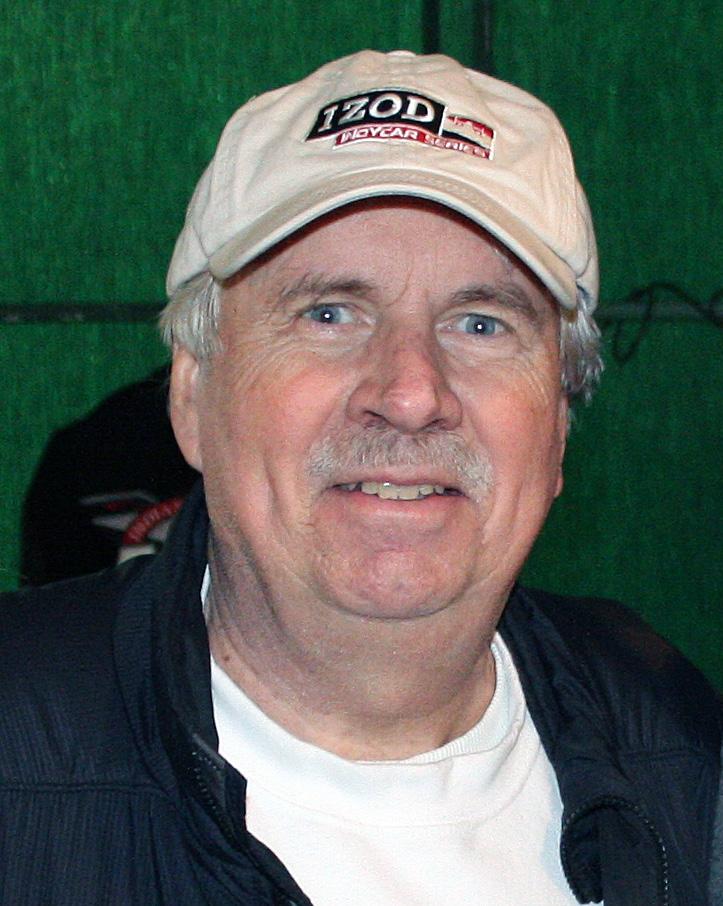
2 minute read
RALPH HEINTZELMAN SR.
MECHANIC/BUILDER
earned Bogar and Heintzelman the Selinsgrove Speedway track championship – the only track title of Opperman’s career. Also in 1973, Heintzelman guided Opperman and the #99 to an unheard defeat of USAC at Williams Grove Speedway. They also won at Eldora Speedway in Ohio against USAC in March of 1974.
Advertisement
Opperman said in the book “Dialed In” by John Sawyer, “the 99 was the best sprinter I ever drove. He said of Heintzelman, “he’d shorten the frame, straighten the frame, build anything you needed, and it was always ready to race.”
Not long after that Eldora win, Opperman moved on and Heintzelman teamed up with Paxton and the winning continued. In his first year with Paxton and the Roy “Shorty” Emrich Chevrolet Team in 1974, the team won track championships at Port Royal and Penn National and the overall KARS (Keystone Auto Racing on Speedways) championship. They won the Tuscarora 50 at Port Royal as well.
In 1975, Paxton raced the famous Al Hamilton sprinter with Heintzelman spinning the wrenches. Heintzelman
By Todd Heintzelman
stayed with Paxton after he and Hamilton split. With help from Maynard Boop in 1976, Heintzelman and Paxton won 15 races at Port Royal and the track championship.
In 1977, Boop became sole owner of the operation. Despite numerous different drivers in the car, the No. 1 was a force in the Central Pennsylvania region with Heintzelman as the mechanic winning the KARS title again, along with the Florida Winternationals and Tuscarora 50.
He eventually went into business for himself as an auto mechanic and built race cars for drivers around the country. At times, half the field at the famed Central Pennsylvania tracks had cars built by his hands.
In 1979, Heintzelman helped Jim Nace before a fire destroyed his shop in January 1980. He didn’t rebuild it.
The lure was still strong and the competitive fire still burned. He eventually worked on race cars again and spent several years working on a pro stock at Selinsgrove Speedway driven by his son, Ralph “Peanut” Heintzelman.

FROM THE EARLY 1970s to 2021, Robin Miller was probably the most followed media personality in all of motorsports, first as a writer for The Indianapolis Star (IndyStar) and then, national TV.

He could be bombastic and opinionated and controversial – all perfect traits for a writer. His take on the Indy Car split between Championship Auto Racing Teams (CART) and the Indy Racing League (IRL) spawned, “I hate Robin Miller” t-shirts. At least, Miller knew people were reading his work.
He was born Robin Lee Miller on October 27, 1949 to Bob and Alene Miller, in Anderson, Indiana and raised on the south side of Indianapolis. He loved racing as a boy. On Saturday mornings, armed with his toolbox of slot cars, parts and tools, he’d head to the local hobby shop for the weekly races. He brought home several trophies for his efforts.
During “The Month of May,” Indy Cars captured Robin’s attention. With no money in the family budget for tickets, Bob found a way to circumvent the turnstiles and the pair enjoyed the Indianapolis 500 from a prime view on the outside of the backstretch.
In 1968, Robin snuck into the Speedway once again, this time as a member of Jim Hurtubise’s pit crew. Maneuvering through the pit entrance, looking the part of a crewman, he stuck close to “Herk” and marched right past IMS Security, despite not having a pit badge. His ability to tinker with toy cars didn’t translate to real race cars and he was let go from the team before race day. “Robin might have been able to put gas in his car, but I’m not sure he could fill the wiper fluid,” noted one longtime friend.
Despite his mechanical shortcomings, he managed to campaign a midget on the USAC trail during the 1970s. There, Miller made the friends and contacts that would last a lifetime. Being a driver himself gave him credibility among the










